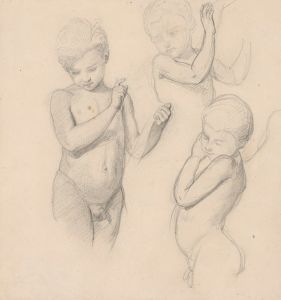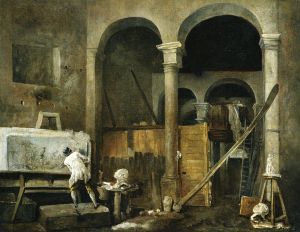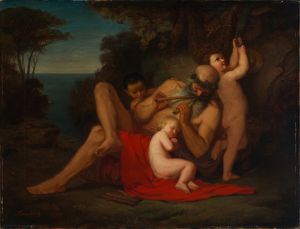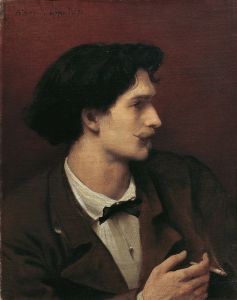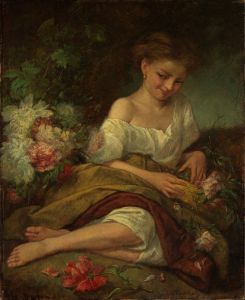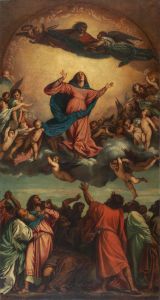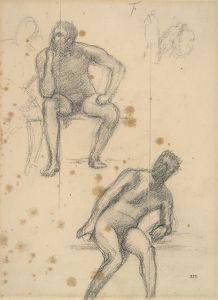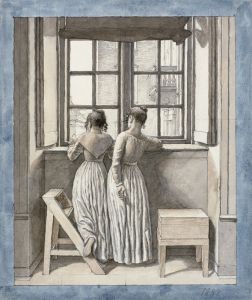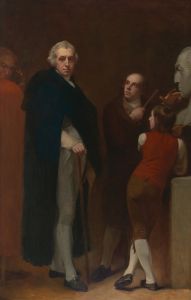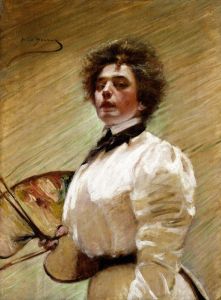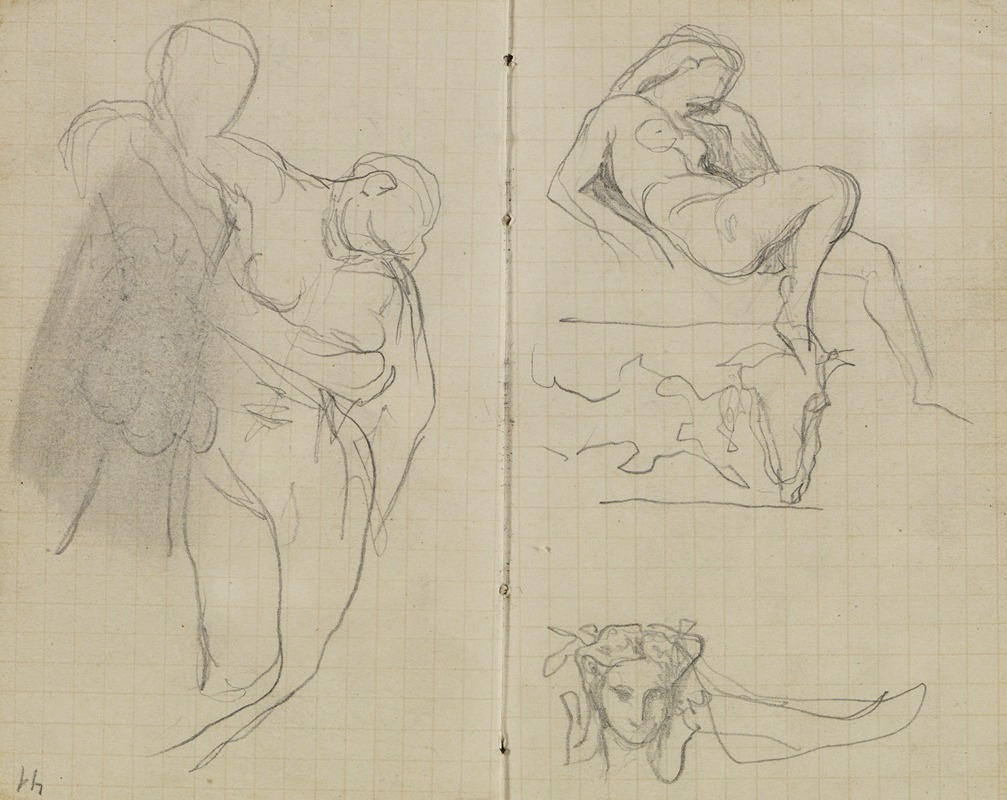
Kleines Skizzenbuch
A hand-painted replica of Anselm Feuerbach’s masterpiece Kleines Skizzenbuch, meticulously crafted by professional artists to capture the true essence of the original. Each piece is created with museum-quality canvas and rare mineral pigments, carefully painted by experienced artists with delicate brushstrokes and rich, layered colors to perfectly recreate the texture of the original artwork. Unlike machine-printed reproductions, this hand-painted version brings the painting to life, infused with the artist’s emotions and skill in every stroke. Whether for personal collection or home decoration, it instantly elevates the artistic atmosphere of any space.
Anselm Feuerbach, a prominent German painter of the 19th century, is known for his classical style and depictions of mythological and historical subjects. One of his lesser-known works is the "Kleines Skizzenbuch," which translates to "Small Sketchbook" in English. This piece is not a single painting but rather a collection of sketches that provide insight into Feuerbach's artistic process and interests.
Feuerbach was born on September 12, 1829, in Speyer, Germany, and was part of a family with a strong intellectual background. His father was a well-known archaeologist, which likely influenced Feuerbach's interest in classical antiquity. He studied art in various European cities, including Düsseldorf, Munich, and Paris, where he was exposed to different artistic movements and techniques. His education and travels significantly shaped his artistic style, which is characterized by a blend of Romanticism and Neoclassicism.
The "Kleines Skizzenbuch" is a testament to Feuerbach's dedication to the classical tradition. Although specific details about the contents of this sketchbook are limited, it is understood to contain preliminary studies and drawings that Feuerbach used as references for his larger works. Sketchbooks like this one were common among artists of the time, serving as a repository for ideas, compositions, and studies of figures and landscapes.
Feuerbach's sketches often focused on the human form, exploring anatomy and the dynamics of movement. This emphasis on the human figure is evident in his finished paintings, where he often depicted scenes from Greek and Roman mythology. His ability to capture the grace and poise of his subjects can be traced back to the meticulous studies found in his sketchbooks.
The "Kleines Skizzenbuch" also reflects Feuerbach's interest in the interplay of light and shadow, a technique he employed to add depth and drama to his compositions. This approach is visible in his larger works, where he used chiaroscuro to enhance the emotional impact of his scenes.
Feuerbach's work, including his sketches, was highly regarded during his lifetime, and he was considered one of the leading figures of the German art scene. However, his career was not without challenges. He often struggled with financial difficulties and faced criticism from some quarters for his adherence to classical themes at a time when other artists were exploring new directions.
Despite these challenges, Feuerbach's legacy endures, and his works continue to be studied and appreciated for their technical skill and classical beauty. The "Kleines Skizzenbuch," while not as widely known as his finished paintings, provides valuable insight into his artistic process and the foundational studies that informed his larger compositions.
In summary, Anselm Feuerbach's "Kleines Skizzenbuch" is an important collection of sketches that sheds light on the artist's methods and interests. It highlights his commitment to classical art and his skill in capturing the human form, elements that are central to his enduring reputation as a master of 19th-century German painting.





